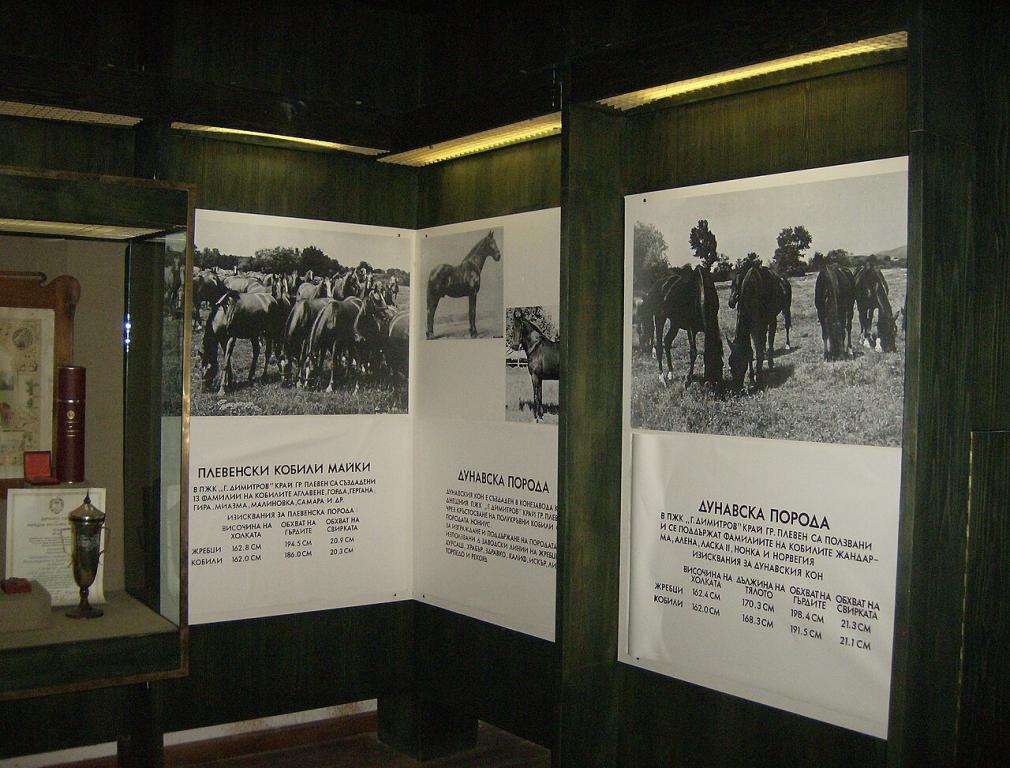
Continent: Europe
Country: Bulgaria
Weight: 610 – 660 kg
Height: 160 – 163 cm
The Danubian is a light draft horse breed developed in Bulgaria, mainly during the 20th century. It was created through crossbreeding between local
Bulgarian mares and several European breeds, including the Nonius, Furioso-North Star, and occasionally the Thoroughbred or Oldenburg.
Bred in the fertile plains near the Danube River, particularly around the state stud farm of Klementina, the Danubian was selected for its strength, docility, and suitability for traction work, both in agriculture and in harness.
The breed also played a role in genetic improvement programs for draft horses across Eastern Europe. Today, its population is limited, and it is considered a rare breed worth preserving.
Danubian breeding is historically concentrated in northern Bulgaria, especially in the Danube plains, which offer ideal conditions for raising draft horses: fertile lands, temperate climates, and vast pastures.
Key regions include:
- Pleven region, around the Klementina stud farm, considered one of the origin and selection centers of the breed.
- Ruse region, near the Romanian border, where Danubian horses are still used for driving and farm work.
- Veliko Tarnovo region, known for traditional breeding and agricultural fairs.
Today, breeding remains mostly local and in decline, though a few initiatives aim to preserve the breed as a national heritage.
The Danubian holds significant regional genetic value in Bulgaria and parts of Eastern Europe.
Selected from crossbreeding between robust breeds such as the Nonius, Furioso-North Star, and Oldenburg, the Danubian has contributed to improving pulling capacity, docility, and resistance in horses intended for agriculture and driving.
While the breed hasn't had a major influence internationally, it has been used in several local crossbreeding programs aimed at producing horses suitable for mixed work in Bulgaria’s rural environment. Today, it is seen as a genetic heritage worth preserving, particularly for its light draft conformation, hardiness, and stable temperament.
The Danubian is a light draft horse breed developed in 20th-century Bulgaria, during a period of modernization in agriculture and transport across Eastern Europe.
Its breeding began after World War I, in the fertile plains of northern Bulgaria, especially around the Klementina stud farm in the Pleven region. The goal was to create a strong, enduring, and docile horse suitable for farm work, but more agile and manageable than heavy western draft breeds.
To achieve this, Bulgarian breeders crossed local mares with stallions from renowned European breeds:
- Nonius, for power and bone structure,
- Furioso-North Star, for elegance and balanced temperament,
- Oldenburg or Thoroughbred, occasionally, to refine the frame.
The Danubian was widely used in collective farms and military institutions in Bulgaria until the 1960s–70s, when it was a cornerstone of working horses. With increasing mechanization, its numbers declined.
Today, the breed remains rare and little known outside of Bulgaria, but retains cultural and functional value. It reflects a period when horse breeding was tightly linked to practical needs, combining hardiness and regional adaptation.
The Danubian is known for its calm and steady temperament. Docile and cooperative, it is generally easy to handle, even by inexperienced riders or handlers. This quality contributed to its success as a light draft horse for farming and driving.
It has good learning ability, a strong work ethic, and natural physical and mental endurance. Its calm demeanor also makes it suitable for modern uses such as equestrian tourism, leisure riding, or even educational activities.
Despite its powerful build, the Danubian is rarely aggressive or nervous, making it a reliable partner in a variety of contexts.
The Danubian is currently considered a local breed with low population numbers, and its future heavily depends on preservation and valorization efforts. The rise of mechanized farming in Bulgaria has sharply reduced the demand for draft horses, resulting in a significant drop in Danubian numbers.
However, several trends offer encouraging prospects:
- Renewed interest in draft horses for alternative uses: leisure driving, rural tourism, organic farming.
- Growing heritage recognition by Bulgarian institutions, considering the breed a part of the country's zootechnical heritage.
- In situ conservation programs, sometimes linked to agricultural schools or regional stud farms.
- Occasional interest from foreign breeders for its hardiness and docile temperament.
Despite this, the Danubian’s future remains uncertain, due to the lack of a structured stud-book, limited international visibility, and weak economic support. Its preservation will require targeted commitment at both local and institutional levels.
The Danubian is generally recognized for its natural hardiness and resistance to disease, thanks to its local origins and rural selection. It is well-adapted to Bulgaria’s continental climate, tolerating temperature fluctuations and extensive management conditions.
To date, no major genetic predispositions have been formally identified in the breed. Few cases of hereditary diseases are reported, largely due to the absence of intensive selection.
Overall, the Danubian is considered a low-maintenance horse, provided it receives basic routine care and appropriate physical activity.